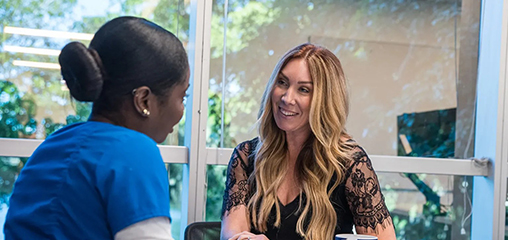Labor and Delivery Nursing: What You Need to Know
What is a labor and delivery nurse?
Labor and delivery nurses are registered nurses who specialize in helping to deliver babies and support mothers and families immediately before, during, and after childbirth. Most labor and delivery nurses work in hospitals, while others work in clinical settings and birthing centers, or attend at-home births. A labor and delivery nurse may also be known as an L&D nurse, delivery nurse, or maternal-child nurse.
What are the responsibilities of a labor and delivery nurse?
A labor and delivery nurse often works 12-hour shifts and may be assigned to either one or a small handful of patients at a time. This allows them to assist many of their patients from early labor through birthing and the immediate postpartum period. Because the physician or midwife may only be present for delivery, the l&d nurse is the mother’s and family members’ main contact and go-to person for questions and support. During each stage, the L&D nurse monitors and documents the baby’s and mother’s vital signs, while staying alert for changes and complications.
Labor and delivery nurses also:
- Monitor patient contractions and dilation
- Administer IVs and medications, including assisting with epidurals
- Advocate for patients
- Coach and encourage mothers throughout labor and delivery
- Assist physicians or midwives during delivery and any complications, including help with procedures and surgery when cesarean delivery is required
- Advise and educate patients and their families on procedures, potential maternal or neonatal complications, and newborn care
- Monitor and care for the mother and infant following birth
Throughout their work, delivery nurses collaborate with and provide status updates to other members of the healthcare team.
Labor and Delivery Nurse Requirements
Women in labor, especially first-time mothers, need a delivery room nurse who can find the right balance of supportiveness and assertiveness. L&D nurses must be able to connect with people of all personality types and remain calm even when a patient’s tension and pain is high. When the time comes, they mustn’t hesitate to take charge. Delivery nurses will also use their communication and people skills to educate new parents, especially after birth, on things like breastfeeding, postpartum recovery, and caring for their baby.
In addition to varying personality types, laboring mothers may range from young teens to those at middle age. No matter who the patient is or their personal circumstances, a delivery room nurse must treat every woman with empathy and care rather than judgment.
While labor and delivery nurses often experience the joy of a new life entering the world, they also must have the knowledge and emotional fortitude to deal with high-risk pregnancies, complications, and the difficult loss of a mother or newborn.
How do you become a labor and delivery nurse?
To become a labor and delivery nurse, you’ll need to earn a nursing degree from an accredited nursing program and obtain the licensure requirements to become a registered nurse. Earning a bachelor degree rather than an associate degree can prepare you with more advanced skills and make you more competitive in this popular nursing career. Once you’re an RN, you can receive on-the-job training in this specialty at your place of employment.
While certification is not required, many L&D nurses pursue certification after working in the field. Certification can help you to earn a higher salary, qualify for promotions, and become more desirable to employers. The most common certification in the delivery RN specialty is the Inpatient Obstetric Nursing (RNC-OB) credential offered through the National Certification Corporation.
Information in this blog post is accurate as of January 11, 2019.
Start Your Future in Nursing Today

If you’re considering a career as a registered nurse (RN), Arizona College of Nursing is here to help you pursue your dream. Our BSN program enables you to earn a Bachelor of Science in Nursing in just 3 years or less with qualifying transfer credits. We’ve helped hundreds of students to earn a BSN degree and enter the nursing profession – and we’re ready to support you on your path to becoming an RN.
Why Choose Arizona College of Nursing?
- Earn a BSN degree in 3 years or less with eligible transfer credits
- Campus locations throughout the US
- Night classes for general education courses
- Hybrid Online/In-Person format for general education classes
- Nursing education is all we do
- CCNE-Accredited Program*
- NCLEX-RN success coaches and exam preparation class
- Financial aid available to those who qualify
Discover Your Path to a Career in Nursing
Information in this post is accurate as of January 11, 2019.
*The Bachelor of Science in Nursing (BSN) degree program at Arizona College of Nursing is accredited by the Commission on Collegiate Nursing Education (https://www.aacnnursing.org/). All Arizona College of Nursing and Arizona College campuses are institutionally accredited by the Accrediting Bureau of Health Education Schools (https://www.abhes.org/), a U.S. Department of Education-recognized accrediting agency.








